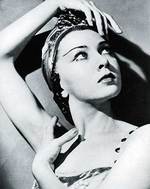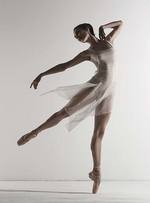Dance that sparked a cultural revolution
Australian dance and art was forever changed after tours here by the Ballets Russes from 1936 to 1940. This month, the University of Adelaide is hosting a symposium that takes a detailed look at this cultural revolution, and how it continues to influence Australian dance today. The Ballets Russes (Russian Ballet) was established in 1909 by the Russian Serge Diaghilev. It became one of the most influential ballet companies of the 20th century, and was renowned for its groundbreaking artistic collaborations between choreographers, composers, artists, and designers. In 1936, Colonel Wassily de Basil brought the Ballets Russes to Australia. Over three tours of Australia, the company influenced some of the greatest names in Australian art history. The Australian Ballet, the University of Adelaide and the National Library of Australia are currently undertaking a four-year joint research project, "Ballets Russes in Australia: Our Cultural Revolution". Funded by the Australian Research Council (ARC), the project looks at the history of the Ballets Russes tours and their cultural impact on Australia, and helps to inform modern-day performances by The Australian Ballet. "The Ballets Russes tours in Australia basically constitute the Big Bang, if you like, for Australian high art and music," said the Chief Investigator of the research project, Associate Professor Mark Carroll from the University of Adelaide's Elder Conservatorium of Music. "It raised the bar for what was possible, and it changed the way Australian artists conceived of European art. Up until that point, Australians had been really starved of the latest trends in European art and performance," he said. "Through exposure to the Ballets Russes tours, the careers of artists like Sidney Nolan and Donald Friend got going. A 23-year-old Nolan received from the Ballets Russes one of his first commissions, and Friend ran a competition for stage design sponsored by de Basil. "Max Dupain, the famous Australian photographer, documented the Ballets Russes heavily while they were here. In the realm of music, people like composer Margaret Sutherland got their first big break through the Ballets Russes. Artists like Norman Lindsay were really drawn to what the Ballets Russes were doing, and he made a number of paintings depicting their performances."
Symposium A symposium being held at the University of Adelaide, Our Cultural Revolution (23-25 May), will explore the enormous impact of the Ballets Russes on the Australian cultural scene. The symposium features a number of international guest speakers, including Professor Lynn Garafola from Columbia University, New York, and Professor Stephanie Jordan from Surrey University. Dr Carroll will co-present a session on the cultural revolution with research partners Nicolette Fraillion, Music Director and Chief Conductor with The Australian Ballet, and Lee Christofis, Curator of Dance at the National Library of Australia. Another session will explore how artists in different fields collaborate to produce a performance, and how visual archives of the Ballets Russes tours in Australia help to inform modern-day choreography and design. "The symposium is a working model of cross-institutional interaction," Dr Carroll said. "Collaboration is at the centre of our ARC project, just as the original Ballets Russes was all about collaboration across the art forms." Among those to attend the symposium will be some of the original dancers from the Ballets Russes, who settled in Australia following the tours. The symposium will be held in the Hartley Concert Room, North Terrace Campus (off Kintore Avenue). For more information and to register, visit: www.australianballet.com.au/brsymposium
The Australian Ballet The symposium coincides with the Adelaide tour of The Australian Ballet, French Connections (23-27 May), which features three ballets, Ballet Imperial, Afternoon of a Faun, and Symphonie Fantastique, that are in various ways linked to the Ballets Russes. For more information about The Australian Ballet and its 2008 season, visit: www.australianballet.com.au
Exhibitions The symposium also includes two exhibitions celebrating the Ballets Russes in Australia - one at the Art Gallery of South Australia (2 May-6 July), and another at the Adelaide Festival Theatre (20 May-20 July). Both of these exhibitions are free and feature items from The Australian Ballet, the National Library of Australia and the Special Collections of the University of Adelaide's Barr Smith Library. "Special Collections has a fantastic treasure trove of Ballets Russes dance-related material, which I found out about when I first started work on this research project," Dr Carroll said. "You'll see some of these things, such as designs, drawings, paintings and original programs from the period, all on display at the two exhibitions." For more information, visit: www.artgallery.sa.gov.au Story by David Ellis
|






